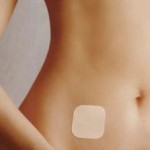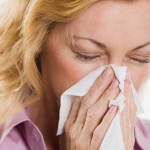Archive for June, 2011
Posted in Healthy Living No discussion yet on June 29th, 2011
Healthy Lifestyle Guide
It is never too late to kick start a healthy lifestyle and all you need is a positive attitude and a little bit of commitment. The most satisfying feeling about transforming your life will be the change in how you feel from day to day. Healthier lifestyle choices bring rejuvenation and renewed energy and that sluggish feeling we all know so well can be tamed.
Being healthy does not necessarily mean that you have to hit the gym every day. Busy lives mean we do not always have time to dedicate that time away from home but exercising regularly, maybe just twice a week for thirty minutes or three times a week for twenty minutes is hugely beneficial.
Aside from exercise, it is really a great idea to begin by looking at your diet. You might think that you get your five a day but is this enough? You need to be getting enough of ALL the food groups, avoiding carbohydrates is no good on it’s own, everyone needs a few carbs in their life and in moderation are no more harmful than a bowl of spinach.
The [...]
Posted in Sexual Health, Women's Health No discussion yet on June 24th, 2011
Female Contraception: Overview of the Birth Control Patches
Contraceptives patches can be described as patches stick to the skin of women and release hormones into their bloodstream. These patches possess 3 layers: the protective outer layer made from polyester, the adhesive layer that is medicated and finally the protective liner that needs to be removed before using the patch.
Contraceptive patches are generally applied on the woman’s upper torso (make sure they are not applied on the breasts), outer part of upper arm, abdomen or buttocks. Every patch lasts for 7 days, after which you will need to change it. The two hormone released by these patches are progesterone and estrogen. The hormones penetrate the skin and reach the user’s bloodstream. Like combined birth controlled pills, the contraceptive patches also work by preventing release of egg from the ovaries. The patches make the mucus that surrounds the cervix much thicker, as a result of which the sperm fails to enter the womb. On using the patch, the womb’s lining also becomes thinner [...]
Posted in Allergy, Disease & Disorders No discussion yet on June 10th, 2011
Food Allergies or Intolerances – How to Differentiate Between Them?
Over twelve million people in the U.S. suffer from food allergies & another several million having food intolerance.
Rates of food allergies have increased two-folds in the United States in the past decade. Another bumming piece of news is that food allergies are heritable. In case one of the parents has an allergy then there’s a twenty-five percent likelihood of the child getting any type of food allergy, not merely the type that his/ her parent has. When mother & father have allergies, then fifty percent kids in the least would be developing them.
True food allergies are our body’s erroneous notions that particular foods are attackers or invaders. Disparate to food allergy, food intolerance isn’t life-menacing & symptoms often nebulous are mostly surfacing quite belatedly from the time of food intake. Though the immune system involvement is there at times however the IgE protein isn’t. Any type of foods could be causal to intolerances & could arise in any age. [...]
Posted in Allergy, Disease & Disorders No discussion yet on June 3rd, 2011
Runny nose allergy
What is runny nose? It occurs when there is excessive production of fluid or mucous such that it moves out of your nose or enters back into your body through the throat. This is caused through the nasal tissues and blood vessels. Runny nose allergy will be caused through exposure to allergens such as dust, pollen, smoke, and animal dander.
Runny nose allergy is often associated with other related symptoms such as nose itching and frequent sneezing. The function of the nose will be primarily including mucus production for trapping pollutants, dust particles, germs, and pollen. Excessive mucus production lead to post-nasal drip and is termed as runny nose.
We could further classify runny nose allergy as follows:
Seasonal: Runny nose allergy symptoms are felt by the patient in specific seasons such as spring, fall, or summer and this is related to the high pollen count that occurs in this season due to the flowering of plants.
Perennial: Runny nose allergy symptoms are experienced by [...]







